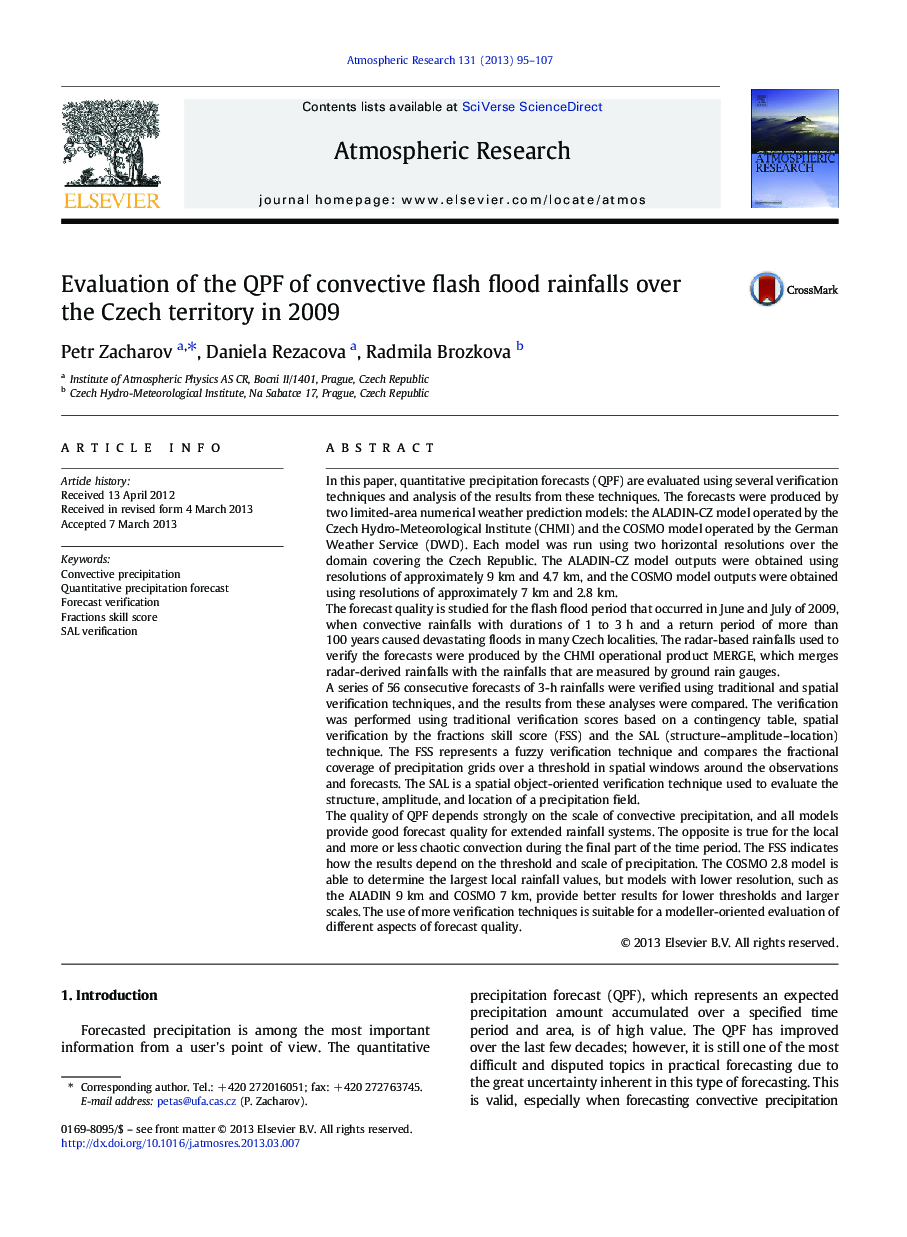| کد مقاله | کد نشریه | سال انتشار | مقاله انگلیسی | نسخه تمام متن |
|---|---|---|---|---|
| 4449975 | 1620537 | 2013 | 13 صفحه PDF | دانلود رایگان |

• Two NWP models were used for the QPF verification.
• Various verification techniques comprising traditional techniques and modern spatial verification.
• The QPF quality depends strongly on the scale of convective precipitation
In this paper, quantitative precipitation forecasts (QPF) are evaluated using several verification techniques and analysis of the results from these techniques. The forecasts were produced by two limited-area numerical weather prediction models: the ALADIN-CZ model operated by the Czech Hydro-Meteorological Institute (CHMI) and the COSMO model operated by the German Weather Service (DWD). Each model was run using two horizontal resolutions over the domain covering the Czech Republic. The ALADIN-CZ model outputs were obtained using resolutions of approximately 9 km and 4.7 km, and the COSMO model outputs were obtained using resolutions of approximately 7 km and 2.8 km.The forecast quality is studied for the flash flood period that occurred in June and July of 2009, when convective rainfalls with durations of 1 to 3 h and a return period of more than 100 years caused devastating floods in many Czech localities. The radar-based rainfalls used to verify the forecasts were produced by the CHMI operational product MERGE, which merges radar-derived rainfalls with the rainfalls that are measured by ground rain gauges.A series of 56 consecutive forecasts of 3-h rainfalls were verified using traditional and spatial verification techniques, and the results from these analyses were compared. The verification was performed using traditional verification scores based on a contingency table, spatial verification by the fractions skill score (FSS) and the SAL (structure–amplitude–location) technique. The FSS represents a fuzzy verification technique and compares the fractional coverage of precipitation grids over a threshold in spatial windows around the observations and forecasts. The SAL is a spatial object-oriented verification technique used to evaluate the structure, amplitude, and location of a precipitation field.The quality of QPF depends strongly on the scale of convective precipitation, and all models provide good forecast quality for extended rainfall systems. The opposite is true for the local and more or less chaotic convection during the final part of the time period. The FSS indicates how the results depend on the threshold and scale of precipitation. The COSMO 2.8 model is able to determine the largest local rainfall values, but models with lower resolution, such as the ALADIN 9 km and COSMO 7 km, provide better results for lower thresholds and larger scales. The use of more verification techniques is suitable for a modeller-oriented evaluation of different aspects of forecast quality.
Journal: Atmospheric Research - Volume 131, September 2013, Pages 95–107